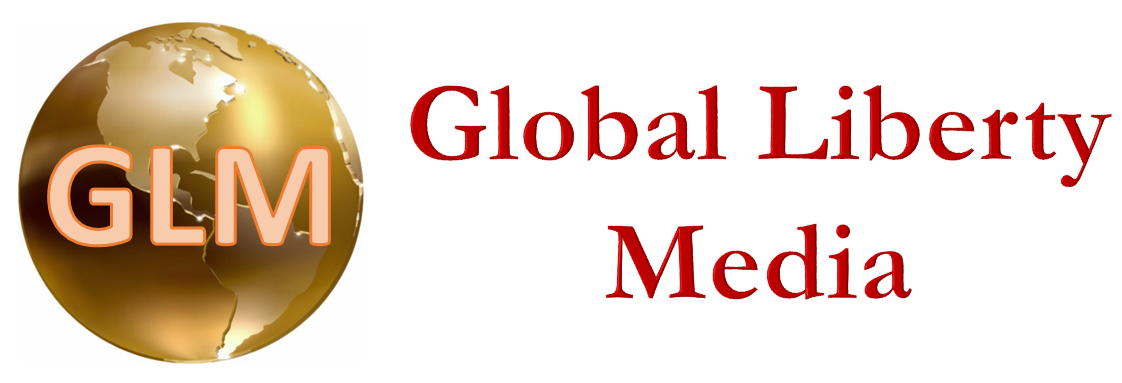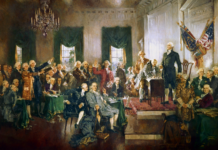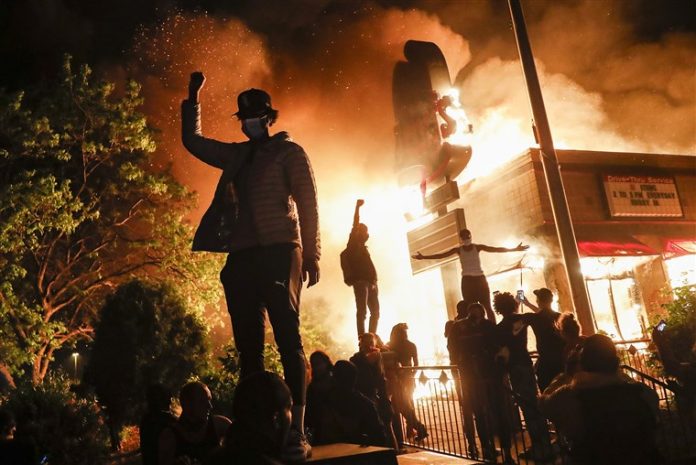Sometimes criticism can be a big motivator. I have been receiving a lot of negative commentaries lately – and most of them have not been constructive by any means – concerning my argument dealing with Critical Race Theory and its role in public schools. CRT is a heavy-handed concept that some scholars who write a great deal on the topic, like William Tate, say in pretty clear and understandable terms that CRT is not a “topic for undergraduate students, but is a framework used in law schools and Ph.D.’s education to better understand how laws are formulated and the influence of law on everyday life.” Why does this matter? This is one of the points that I keep getting hammered on. People are literally telling me that Tate wouldn’t have the slightest idea about what is being taught in elementary school because he is an academic. He only wrote the seminal piece in which he proposed CRT be introduced in education to address his belief, and the beliefs of other race-hustling scholars, that race remained an under-theorized topic in public school, and that CRT should be incorporated to examine the connections between whiteness, property, and inequity in the public schools. Not only was this the topic of Tate’s Towards a Critical Theory of Education, but it is echoed in a paper I pulled up this morning called Where Are We? Critical Race Theory in Education Twenty Years Later. The first thing the authors do is reference Tate’s essay.
“It has been 20 years since the publication of Ladson-Billings and Tate’s (1995) article introducing critical race theory (CRT) to education. In “Toward a Critical Race Theory in Education,” Ladson-Billings and Tate asserted that race remained a significant factor in society in general, and education in particular. Yet, according to the authors, race was under-theorized as a topic of scholarly inquiry in education. As a means to begin to address this theoretical void, they proposed that critical race theory, a framework developed by legal scholars, should be employed to examine the role of race and racism in education. In particular, drawing upon the work of legal scholar Cheryl Harris (1993), they described the intersection of race and property rights, and how the construct of whiteness as property could be used to understand inequity in schools and schooling. Their work set us on a path toward critical race theory in education. Our goal in this article is to explore the territory that has been covered since that time.” (Dixon & Rousseau Anderson, 2018)
Just to be fair, when this paper was written, twenty-two years have passed since Tate wrote his. We are now approaching thirty. That doesn’t really matter except for the time that has passed, allowing them to come up with a solid methodology of how to employ CRT in public education. Before I go on, I want to draw attention to the last lines in the quote above; “the intersection of race and property rights, and how the construct of whiteness as property could be used to understand inequity in schools and schooling.” The work they are referencing is Cheryl Harris’s Whiteness as Property, published in The Harvard Law Review in 1993. I cover this essay in pretty good detail in my own book, A Critical Look at CRT in Education, Research and Social Policy in Chapter Ten. The following are my citations of her essay.
“Harris writes that the White man’s subjugation of Black people, and their labor, along with the conquest of land originally inhabited by Native Americans, make up the theoretical foundations of property ownership protected by law today. According to Harris (1993), it was the alleged “interaction between conceptions of race and property that played a critical role in establishing and maintaining racial and economic subordination.”
We all know this is a bunch of malarkey because anyone can own property in America. Property ownership is the foundation for all human rights. I discuss this in greater detail as well, however, the point is that CRT in education was originally established to do exactly what Tate stated as the purpose of CRT. Examine laws and social policies to understand the influence of law on everyday life. Sometimes, when reading people’s responses to my writing I am under the impression that because I argue CRT isn’t being taught in school the way people think it is, it is assumed I am arguing in favor of CRT. Nothing could be further from the truth. I understand CRT’s connection to Marxism, and its intentions are far more dangerous than simply teaching fifth-graders about racism. They fully intend on stripping us of our property and everything else we consider to be traditional Americanism. When CRT is incorporated into education it is primarily done on the administrative level to examine how the laws, primarily related to property ownership, are creating racial disparities and inequality in schools. Don’t take my word for it, read the papers I am citing here.
One thing I am trying to draw people’s attention to is the difference between what Marxist scholars call CRT, and what is being taught in school. This is commonly referred to as critical theories on race, and is meant to start changing the way children view themselves in relation to their “own racist attitudes.” It is easy to brush this off as CRT but there is a difference that goes beyond calling it an issue of semantics. One paper I keep referencing is called Will the Real CRT Please Stand Up? The Dangers of Philosophical Contributions to CRT. The author argues that CRT scholarship is not interested in re-socializing white people because whites and blacks cannot peacefully exist, and that any attempts to constructively engage with white people will fail because we are only interested in reforms that benefit us first. That is a basic tenet of CRT called interest convergence by the way. Furthermore, he states that the objective of CRT is to deconstruct “whiteness” which is protected by American law. Gee, there is the idea of law being the focus again. Don’t take my word for it, read the paper yourself. At least consider the validity of my quote below.
“Curry (2009) argues that CRT scholars are not interested in philosophical contributions which attempt to re-socialize white people into acknowledging their privilege but deconstruct the very idea of “whiteness,” which is protected in American law. Critical Race Theory does not attempt to create a peaceful, multicultural world. Rather, its foundations are built on the belief that racism is a normal, everyday part of American society, and the ideals put forth in the civil rights movement have failed. CRT rejects the notion that racism can be solved by focusing on racial ignorance. Instead, the scholarship driving CRT is based on the idea that Black and White people cannot peacefully coexist, and a “constructive engagement with whites” will accomplish nothing because we are operating from the perspective of maintaining our own dominance.” (Curry, 2009)
Why does this matter? For several reasons. One, it is the CRT scholarship being done at the highest levels of academia that poses a far greater danger to the nation than the attempts to introduce race-based lessons in elementary school. One of my central arguments is that Critical Theory has been embedded in public schools for nearly a century. To see how long the powers that be have been dumbing down education, there is no better source than Charlotte Iserbyt’s Deliberate Dumbing Down of America. While Americans are rightfully awakening to and challenging what is going on in education, CRT is only a small part of the problem. Consider for a moment what we are seeing concerning transgenderism and the sexualizing of our children. This started in the 1990s with the introduction of AIDS prevention education. Perverse topics were embedded within these lessons and it was AIDS prevention that was used as a tool to silence opposition. As was the lie that homosexual kids commit suicide at higher rates. Two, this idea manifests again in the paper Where Are We? CRT in Education Twenty Years Later. The authors discuss several of the directions CRT research can take while also noting that “not all scholarship that includes race necessarily engages critical race theory” (Dixon & Rousseau Anderson, 2018).
Looking at this from the perspective of Tate’s writings and what his stated purpose of CRT in education should be, Dixon & Rousseau Anderson (2018) outline some ideas of what CRT scholarship concerning education should look like. For example, they state that CRT in education “examines the role of educational policy and educational practices in the construction of racial inequity and the perpetuation of normative whiteness.” What does that mean? It means what I have been arguing all along. CRT is a research model used to prove racism exists where it really doesn’t. “CRT in education rejects historicism and examines the historical linkages between contemporary educational inequity and historical patterns of racial oppression.” Finally, they also state that “CRT in education agitates and advocates for meaningful outcomes that address racial inequity. CRT does not merely document disparities.” Do you see the word agitates? That is what radicals do, they agitate. Curry (2009) described the real CRT as radical activism in law and social policy against whiteness. The following are my citations of Curry’s work.
“Critical Race Theory, on the other hand, “acknowledges the need for radical political and legal activism against whites and whiteness” (Curry, 2009). It is argued by Curry (2009) that CRT was co-opted by a philosophical movement that believed white people could be conditioned to self-reflect on their own racist attitudes, and by integrating Critical philosophies of race into the white consciousness, racism could be solved.”
All I am trying to do is draw attention to the idea that perhaps, focusing on elementary school may not be the best strategy here. There is no doubt that there is a relationship between what is being taught in school and the higher-level CRT scholarship. Wouldn’t the higher level academia though, be the head of the snake, and the lessons trickling down a mere symptom of the bigger problem of Marxism itself? One thing I think I need to clarify is that I am not suggesting that this shouldn’t be fought on the elementary level. Maybe I have worded things in a way that gives that impression but believe me, I know it is an issue. I think many people when reading one of my articles suggesting that CRT isn’t taught the way people think it is, may have not read any of the other dozens I have written on the topic. For instance, in my article Critical Race Theory as a Means of Coercive Thought Reform, I relate the lessons in elementary school to the brainwashing methods employed in China during the cultural revolution, with legitimate citations and all. I cover this in even greater detail in Chapter Two of my book as well. My study on this topic has evolved a great deal and I have come to the opinion that the bigger danger is the work being done at the higher academic levels. If that work didn’t exist, there would be nothing to incorporate into K-12 schooling. That is what I am arguing. Trust me, I think it is awesome that parent groups are challenging local school boards, I just question how effective it will be in the long run. The reason I question that is that I spend hours upon hours reading the words of these Marxist scholars who are hell-bent on transforming our nation, using race the same way Marx used class. My motivations are the preservation of liberty and saving the minds of our children. I am just focused on a different area, that’s all. Thank you for taking the time to read this, I know my articles are pretty long.
Be on the lookout for my next article where I will be discussing Applied critical race theory: educational leadership actions for student equity.

























